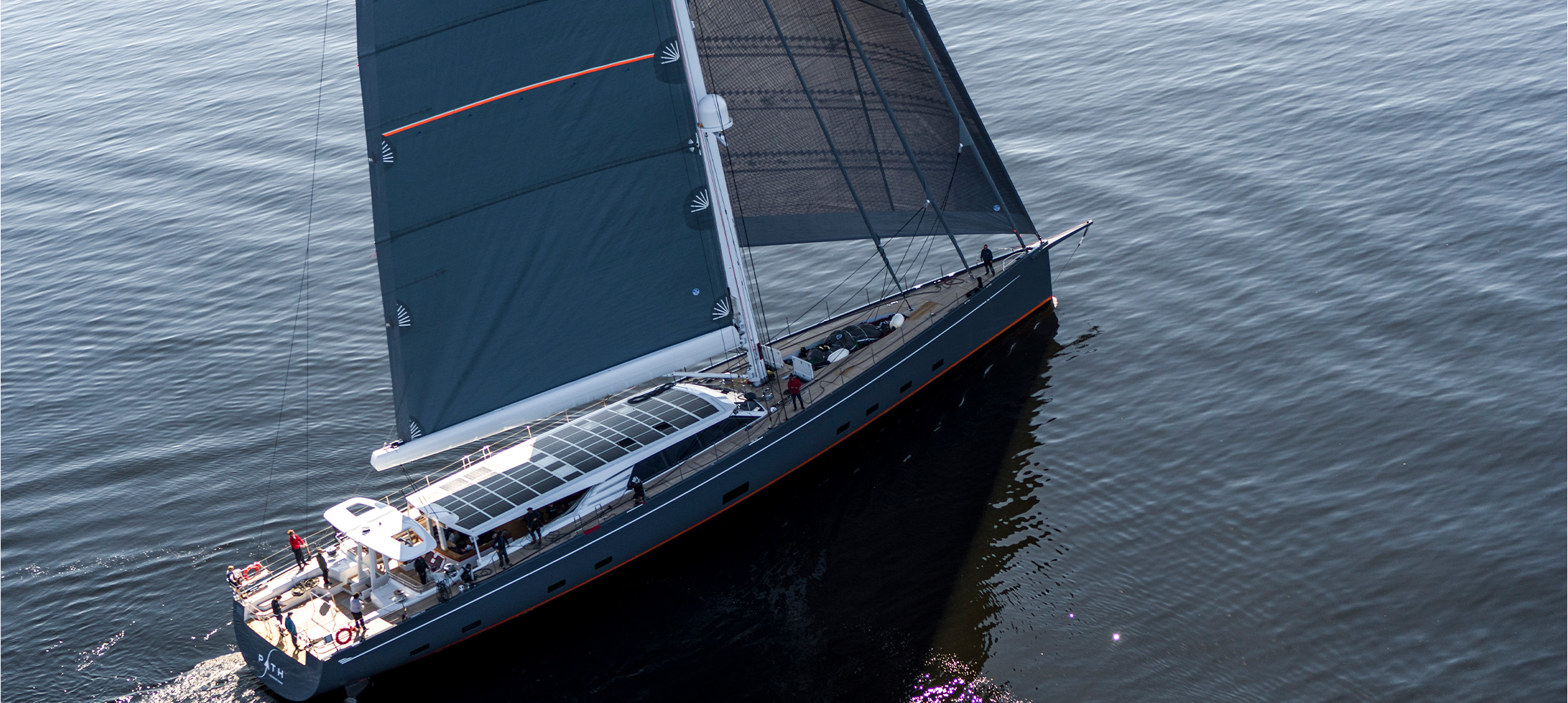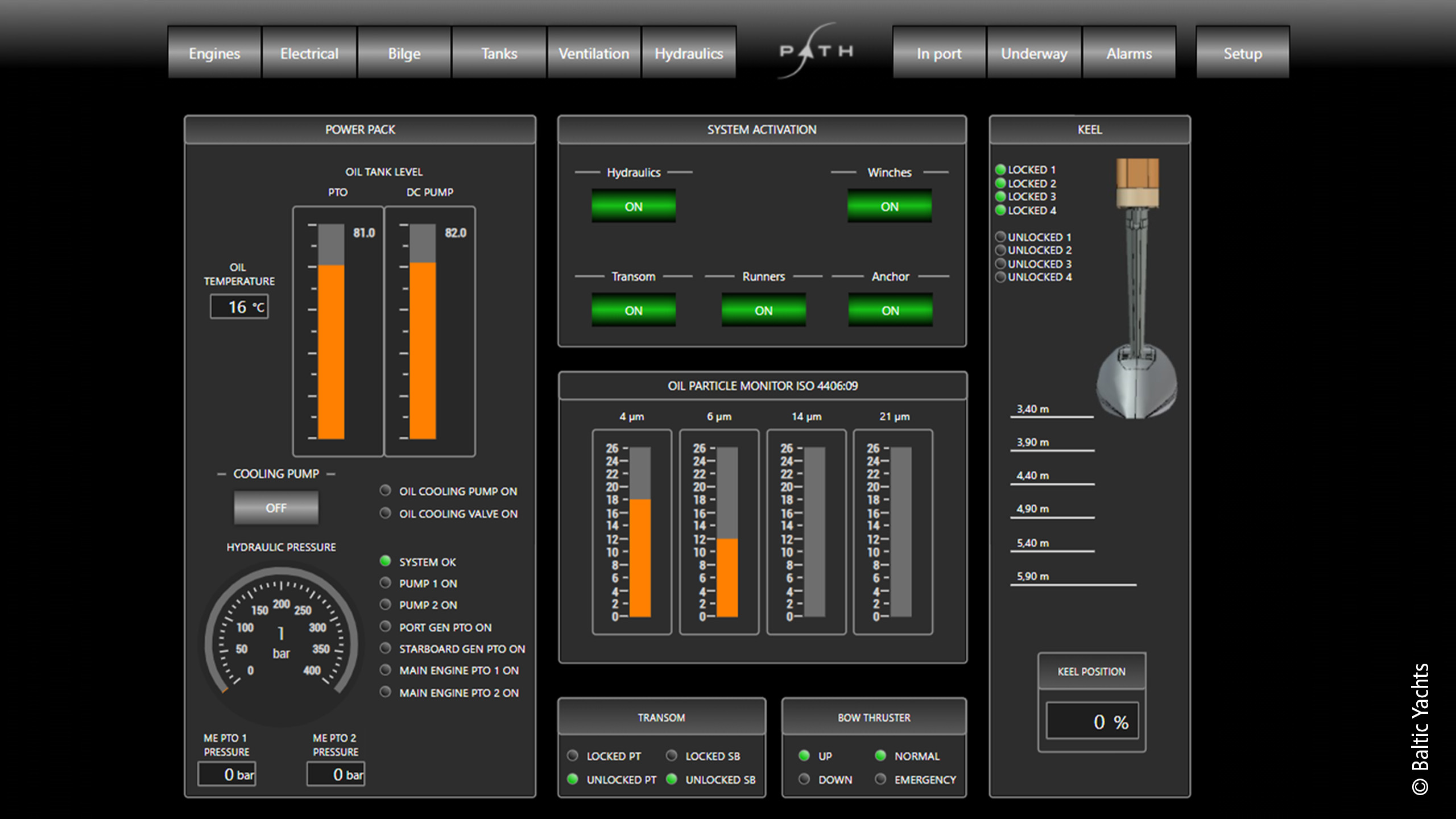

Market leader Baltic Yachts ramps up use of PC-based control
Located in the Finnish city of Jakobstad, Baltic Yachts Oy AB Ltd. employs 210 highly qualified staff and is regarded as the leading manufacturer of modern composite sailing yachts. The company consistently relies on PC-based control from Beckhoff to ensure that it maintains this strong reputation going forward. The latest example is the supercruiser Baltic 146 Path, on which Beckhoff components play a major role in offering customers a sailing experience that is as comfortable as it is sporty.

Back when it was launched in early May 2021, the sailing yacht Baltic 146 Path, was the third largest yacht in volume that Baltic Yachts had built. The company’s expertise in building advanced composite yachts is based on nearly half a century of experience, ranging from many smaller series yachts to custom superyachts.
This includes multi-role yachts such as the Baltic 146 Path, which offer a platform for luxurious living on the one hand and high performance suitable for sailing events on the other. Designed by the renowned design and construction office judel/vrolijk & co in Bremerhaven, the supercruiser is predestined to cross oceans at high speed in maximum comfort, not least on account of its sheer length of just under 45 meters. What’s more, the lifting keel and double rudder system promise additional speed and maneuverability.
There’s no question about it: this project requires reliable and proven systems as well as state-of-the-art manufacturing processes. To this end, the technicians at Baltic Yachts combine their expertise with traditional craftsmanship and the most powerful marine technology, which is precisely where PC-based control comes into play. The control technology from Beckhoff makes an invaluable contribution to offering customers the most comfortable and straightforward sailing experience possible. PC-based control has already been in use on various yachts for a number of years, initially for lighting control and AV (audio/video) integration in the on-board systems; however, the technicians at Baltic Yachts have taken its range of applications to a new level on this yacht, in addition to automating many technical systems with Beckhoff technology. These include:
- Bilge pump, water pumps and valves
- Sail operating hydraulic winches
- Azipod control
- Battery charging and charge status monitoring
- Lighting
- HVAC (air conditioning)
- keel lifting system
- Anchor lifting motor control
- Generator monitoring
A yacht that really listens: TwinCAT Speech integrated
All functions on the Path are visualized and operated via TwinCAT HMI and various control panels. Yacht owners are able to take advantage of functionalities such as the ability to call up a wide variety of lighting scenarios via a control panel, smartphone, or tablet. The Baltic 146 Path even offers voice control, as the technicians at Baltic Yachts have integrated TwinCAT Speech. What’s more, the Beckhoff system – comprising the CX5140 Embedded PC and EtherCAT Terminals – monitors and controls the various hydraulic, AC/DC electrical, freshwater/wastewater, and fuel systems. Bilge and fire extinguishing systems are also included. Some projects also call for technicians to use compact EL72xx servo terminals for motor control when moving sliding cabin doors and for lifting the boat propeller.
For Mikael Johansson, senior automation engineer at Baltic Yachts, the potential applications for PC-based control from Beckhoff are far from being exhausted: “We are planning to use PC-based control for IoT solutions and as the basis for a new SCADA system based on TwinCAT HMI.” The openness of Beckhoff’s control technology offers a real advantage here, as it allows the systems to be designed freely and precisely to suit individual requirements.

